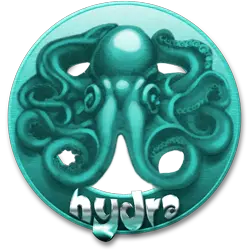
The World of Manga Collecting: Tips for Building and Maintaining Your Collection
In the vibrant universe of literary and artistic collecting, one form that has grown significantly in popularity over the years is manga. Originating from Japan, manga comprises a wide array of graphic novels and comic books that cater to various age groups and interests. Manga collecting is not merely a hobby—it’s an immersive experience that lets enthusiasts dive into diverse narratives, captivating art styles, and rich cultural nuances.

Venturing into the world of manga collecting opens the door to exploration and discovery. Every manga series carries its unique charm, compelling characters, and engaging plotlines, often reflecting aspects of Japanese culture and philosophy. The joy of manga collecting lies not only in reading these fascinating stories but also in the physical accumulation of books, the thrill of hunting down rare editions, and the visual delight of seeing a well-curated collection grow over time. Whether you’re a fan of action-packed Shōnen, emotion-filled Shōjo, or the mature themes of Seinen, the world of manga offers something for everyone, making collecting an adventure of endless possibilities.
Manga collecting is much more than a casual pastime; it’s an expression of passion, an educational pursuit, and a form of cultural engagement. Each manga series is a world unto itself, with its unique characters, plotlines, and art styles, encapsulating a wide range of themes and genres. To own and curate such diverse works is to have a personal library of adventures, emotions, and perspectives at one’s fingertips. This tangible connection to the creative output of numerous authors and illustrators across decades is part of what makes manga collecting so meaningful and rewarding.

There’s a unique joy in manga collecting that springs from multiple aspects. There’s the thrill of discovering a new series or creator, the satisfaction of completing a series, and the nostalgia evoked by classic editions. The visually compelling covers, the tactile pleasure of turning physical pages, and even the distinctive smell of printed manga contribute to an immersive sensory experience that digital platforms can’t replicate. Beyond individual enjoyment, manga collecting also fosters a sense of community. Collectors share recommendations, trade volumes, and engage in enlightening discussions about their favorite series or characters. In this way, the act of collecting becomes a shared joy, connecting manga enthusiasts from around the world.
Manga, a unique and integral part of Japanese culture, has a rich history that spans centuries. The term “manga” roughly translates to “whimsical pictures” and it has been used since the 18th century, but the form as we know it today began to take shape in the post-World War II period. Early precursors include “Toba-e,” a type of narrative scroll art dating back to the 12th century, and “kibyoshi,” an 18th-century genre of illustrated book. These forms combined visual art with storytelling in ways that laid the groundwork for modern manga.
The true evolution of manga started in the late 1940s and early 1950s, driven in part by the work of Osamu Tezuka, often hailed as the “God of Manga.” His seminal series “Astro Boy” set a new standard for the medium, introducing cinematic techniques and complex narratives that greatly expanded the possibilities of what manga could be. The subsequent decades saw the development of various manga genres (or “demographics”), including shonen (boys’), shojo (girls’), seinen (young men’s), and josei (young women’s), each with its distinctive themes and styles. Manga also began to diversify in terms of subject matter, tackling everything from action, fantasy, and romance to more niche topics like golf or cooking. Today, manga is a diverse and vibrant medium, continually evolving and pushing the boundaries of visual storytelling.
Manga encompasses a vast array of genres and styles, catering to diverse audiences of all ages and interests. Shonen manga, typically targeted at young boys, is often characterized by high-energy action, adventure, and camaraderie, with popular titles like “Naruto” and “Dragon Ball” defining the genre. Shojo manga, aimed at young girls, frequently focuses on romance and relationships, often set against the backdrop of fantasy or everyday life, with series like “Sailor Moon” and “Fruits Basket” being quintessential examples. Seinen and Josei manga, for young adult men and women respectively, explore more complex themes and narratives, spanning genres from science fiction and mystery to drama and slice-of-life. There are also unique genres such as “mecha,” featuring giant robots, and “isekai,” involving characters transported to alternate universes. The visual styles of manga can vary greatly as well, from the exaggerated and cartoonish to the meticulously detailed and realistic, demonstrating the vast creative range of this dynamic art form.

Starting a manga collection can feel overwhelming given the vast array of options, but with a bit of guidance, it can quickly become a rewarding hobby. Here are a few tips for beginners:
- Choose a Genre or Author: If you’re new to manga, it’s advisable to start with a genre you typically enjoy in other media, whether that’s action, romance, mystery, or fantasy. You could also choose to follow the works of a specific author whose art style or storytelling you appreciate. This will help narrow down your choices and make the starting point more manageable.
- Know Where to Buy: Manga can be purchased from a variety of sources. Local bookstores and comic shops often carry popular titles, and it’s always worth supporting these businesses if you can. Online retailers like Amazon offer a wide selection, often at competitive prices. For rare or out-of-print editions, you might look at secondhand bookshops, online auction sites, or manga-specific online stores. Always ensure you’re buying from a reputable source to avoid counterfeit copies.
- Start Small: You don’t need to amass a large collection right away. Start with a few volumes of a series you’re interested in, and expand from there. Starting small also allows you to figure out your preferences and refine your collecting goals as you go.
- Read Before You Buy: It’s easy to get swept up in the excitement of starting a collection and buy a bunch of volumes at once, but it’s better to read a few chapters online or borrow a volume from the library first to ensure you enjoy the series.
- Preservation: Take care of your manga to maintain its value and longevity. Keep your books away from direct sunlight, which can cause discoloration. Storing your manga in a cool, dry place helps prevent pages from yellowing. You might also consider book covers or sleeves for extra protection.

Navigating the vast world of manga can be made significantly easier by leveraging the collective knowledge of the manga community. Reading reviews, whether online or in print, can give you a sense of the quality and appeal of a series before you decide to add it to your collection. Online platforms like Goodreads, Reddit, and various manga-centric forums host myriad reviews and discussions, providing an invaluable resource for any collector. Joining these communities not only gives you access to a wealth of recommendations but also allows you to engage in meaningful conversations, broaden your understanding of manga, and even make new friends with similar interests. By being part of a manga community, you can keep up with the latest releases, discover hidden gems, and get tips on enhancing your collection. Sharing and learning in these communities can significantly enrich your manga collecting journey.
As your manga collection grows and your tastes become more refined, you may seek new strategies for expanding your library. Attending conventions is a fantastic way to immerse yourself in the culture, discover new series, and score great deals or rare finds. Conventions often host panels with authors and artists, giving you insights that can further deepen your appreciation of the medium. Participating in online forums is another great way to connect with fellow collectors, exchange thoughts about series, and get suggestions for what to explore next. Additionally, subscribing to manga magazines or websites can keep you abreast of upcoming releases, industry news, and exclusive content. Many of these sites also offer digital subscriptions, allowing you to read on the go.
Identifying and finding rare manga editions can add a thrilling dimension to your manga collecting journey. Rare editions often include first prints, limited editions, or versions with variant covers. They can also be volumes that are out of print and difficult to find. To identify these, knowledge about the manga industry and specific publications is crucial. You need to keep an eye on publishing news, and be familiar with the works of specific authors and their special editions.
Finding rare manga can be a bit of a treasure hunt. You can start by checking online platforms like eBay, Amazon, or specialized manga websites that deal with out-of-print editions. However, always ensure the credibility of the seller when shopping online. Book fairs, comic conventions, and even garage sales can be gold mines for finding rare manga editions. Networking with other manga collectors, either in person or in online communities, can also lead you to great finds, as they might be willing to trade or sell items from their own collections. Remember that patience and persistence are key when hunting for these unique pieces.
Preserving Your Manga Collection
Proper storage of your manga collection is paramount in maintaining its condition and longevity. Exposure to sunlight, for instance, can cause pages to yellow and covers to fade over time, significantly diminishing the value and enjoyment of your collection. Therefore, it’s advisable to store your manga in a dark, cool, and dry place to prevent any sun or moisture-related damage. Using book covers or sleeves can also provide an additional layer of protection against dust, fingerprints, or accidental spills. Furthermore, maintaining a suitable environment, with stable temperature and humidity levels, can prevent issues like mold growth or paper degradation. Remember, the condition of your manga is a key factor in its value, especially for rare editions, so taking the time to store your collection properly is an investment in its future.

Organizing your manga collection is not only essential for ease of access but also enhances your enjoyment of the hobby. You may choose to organize your collection by genre, author, or series, depending on your preference. For instance, if you’re a fan of particular authors, arranging your collection by author can make it easy to locate their works. If you prefer certain genres, you might group your manga accordingly, such as separating romance from horror or action titles. Alternatively, if you’re collecting multiple volumes of a series, organizing them in sequential order allows for a satisfying visual display and makes it easier to follow the storyline. Remember, the way you choose to organize your collection is a reflection of your personal tastes and should ultimately serve your enjoyment and appreciation of the manga.
The Market for Manga
Manga, like any collectible, can have significant resale value under the right circumstances. Certain editions can become highly coveted collectors’ items, particularly first editions, discontinued series, or manga with unique features such as autographs from the author or artist. Limited editions or those with special cover art can also fetch higher prices. The value of these collectibles often appreciates over time, especially if the manga is kept in excellent condition. However, it’s important to note that manga collecting should primarily be a labor of love. While some collectors have certainly profited from their collections, the market can be unpredictable, and not all manga will necessarily increase in value. As such, the joy of collecting should stem first and foremost from your appreciation of the art form.
Encouragement for new collectors
Venturing into the world of manga collecting can be an incredibly rewarding hobby. Whether you’re drawn to the captivating narratives, intricate artwork, or the thrill of discovering rare editions, there’s something truly special about building a collection that reflects your personal tastes and interests. As a new collector, you’re about to embark on a journey that’s as exciting as the stories held within the pages of your manga. You’ll connect with fellow enthusiasts, immerse yourself in diverse genres, and gain a deeper appreciation for the art of manga. Always remember, your collection is a representation of you. So, follow your passion, take your time, and most importantly, enjoy the journey. The world of manga is vast and varied, and it’s waiting for you to dive in. Happy collecting!










